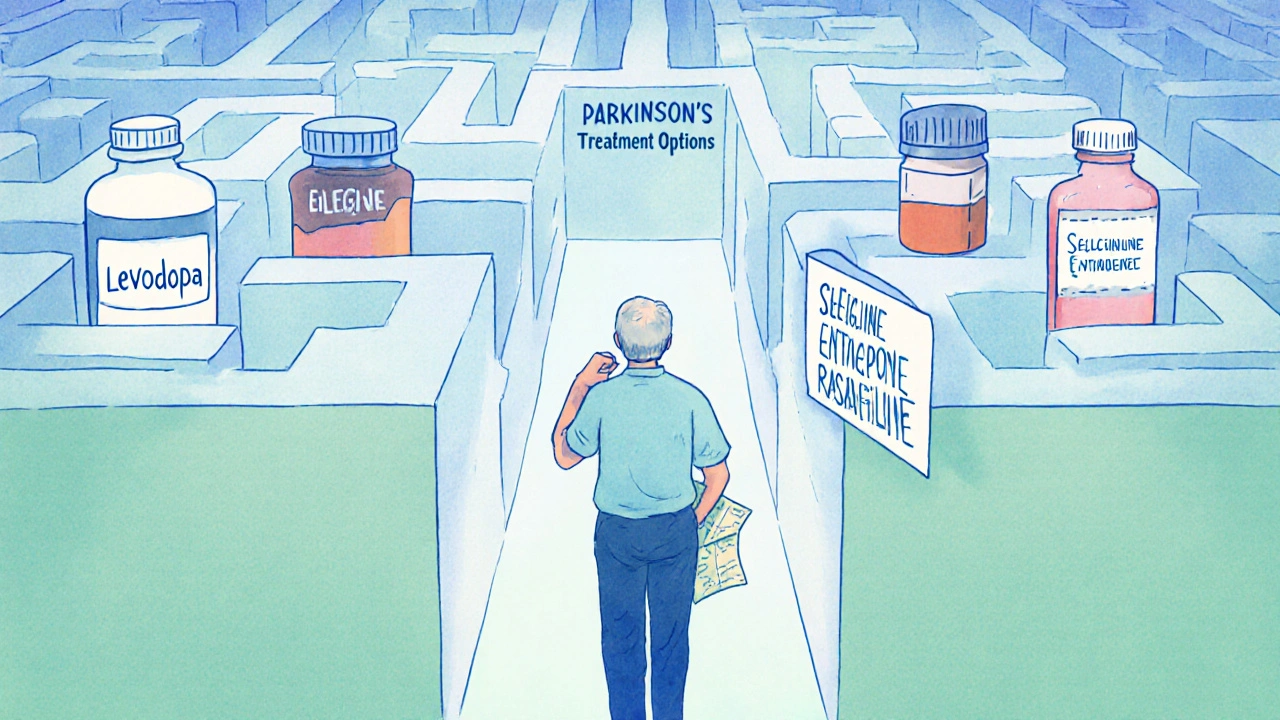Parkinson's Disease Medication: What You Need to Know
When talking about Parkinson's disease medication, the drugs used to manage the motor and non‑motor symptoms of Parkinson’s disease. Also called PD meds, these treatments aim to restore dopamine function, smooth out tremors, and improve daily living. Understanding how they work helps you choose the right plan and avoid common pitfalls.
Parkinson’s therapy revolves around a few key drug families. The cornerstone is levodopa, a precursor that the brain converts into dopamine, directly tackling stiffness and bradykinesia. Dopamine agonists mimic dopamine’s action and are often used early or alongside levodopa to smooth out “off” periods. MAO‑B inhibitors such as selegiline slow dopamine breakdown, extending its availability, while COMT inhibitors block another breakdown pathway, boosting levodopa’s effect. Together, these classes form a layered approach: levodopa provides the strongest boost, agonists add steady stimulation, and enzyme inhibitors fine‑tune the system.
How the Drug Classes Interact and When to Use Them
Choosing the right mix depends on disease stage, age, and side‑effect tolerance. Early on, many clinicians start with dopamine agonists to delay levodopa‑induced dyskinesia. As symptoms progress, levodopa becomes essential for its robust motor control, but patients may notice wearing‑off fluctuations. Adding a MAO‑B inhibitor can stretch each dose, reducing the number of tablets needed each day. If wearing‑off still persists, a COMT inhibitor like entacapone can raise levodopa levels without raising the dose.
Beyond motor control, non‑motor symptoms such as depression, sleep disturbances, and autonomic issues also shape medication choices. For example, some dopamine agonists improve mood but may cause sleep attacks; MAO‑B inhibitors have modest antidepressant effects. Understanding these trade‑offs is crucial because side‑effects often dictate whether a patient stays on a drug. Common issues include nausea from levodopa, impulse‑control disorders from agonists, and orthostatic hypotension from MAO‑B inhibitors.
Drug interactions add another layer of complexity. Certain antidepressants, especially irreversible MAO‑A inhibitors, can trigger hypertensive crises when combined with MAO‑B inhibitors. Over‑the‑counter cough medicines containing dextromethorphan may also interact with levodopa. Always check with a pharmacist before adding new meds, supplements, or herbal products.
Monitoring is a continuous process. Blood pressure, liver function, and vitamin B6 levels should be checked periodically, especially when using COMT inhibitors. Adjust dosing based on “on/off” diaries that patients keep—note when symptoms improve or worsen relative to medication timing. This data helps clinicians fine‑tune the regimen and avoid unnecessary dose escalations.
In addition to oral drugs, advanced therapies like deep brain stimulation (DBS) or infusion pumps (levodopa‑carbidopa intestinal gel) become options when medication alone can’t control symptoms. These interventions don’t replace meds but often allow lower doses, reducing side‑effects while preserving quality of life.
Overall, Parkinson's disease medication is a dynamic toolbox. By understanding each class—levodopa, dopamine agonists, MAO‑B inhibitors, COMT inhibitors—and how they interact with patient‑specific factors, you can build a regimen that balances symptom relief with tolerable side‑effects. Below you’ll find a curated set of articles that dig deeper into safety tips, dosing strategies, and emerging treatments, giving you practical guidance to manage Parkinson’s more confidently.
Azilect (Rasagiline) vs Other Parkinson's Drugs - In‑Depth Comparison
- Laura Ledas
- Oct, 20 2025
A detailed, easy‑to‑read comparison of Azilect (Rasagiline) with other Parkinson's drugs, covering effectiveness, side effects, dosing, cost and best‑use scenarios.
Learn More